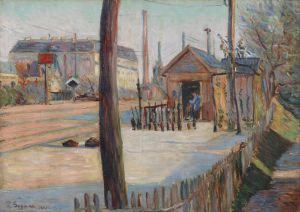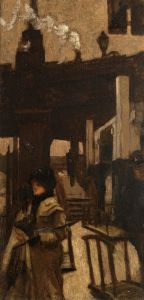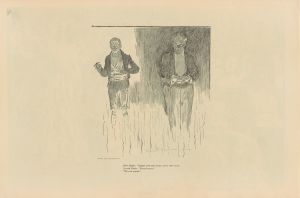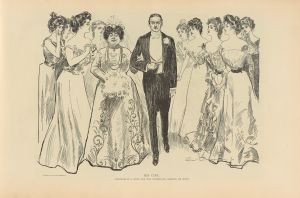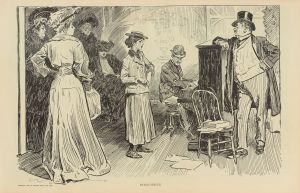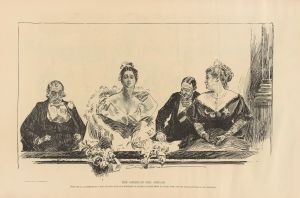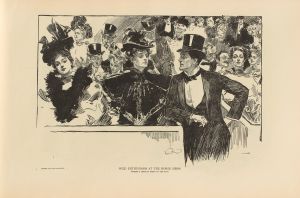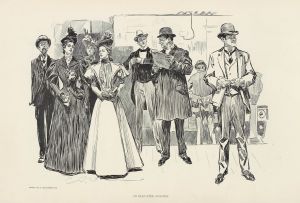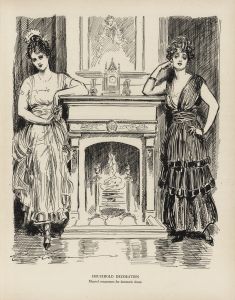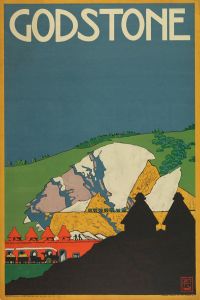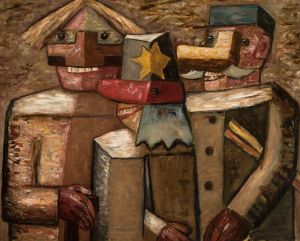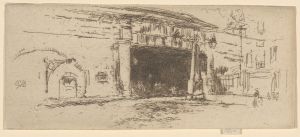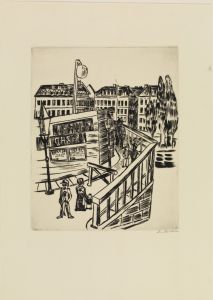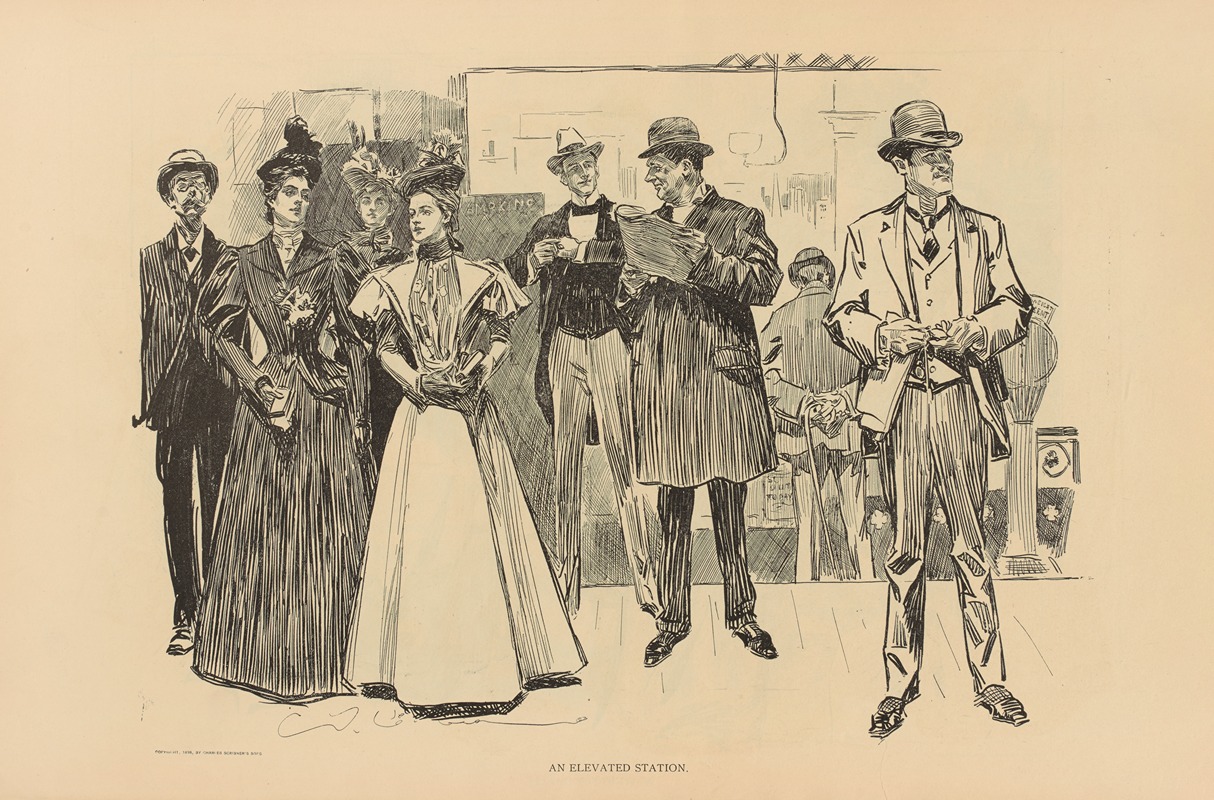
An elevated station
A hand-painted replica of Charles Dana Gibson’s masterpiece An elevated station, meticulously crafted by professional artists to capture the true essence of the original. Each piece is created with museum-quality canvas and rare mineral pigments, carefully painted by experienced artists with delicate brushstrokes and rich, layered colors to perfectly recreate the texture of the original artwork. Unlike machine-printed reproductions, this hand-painted version brings the painting to life, infused with the artist’s emotions and skill in every stroke. Whether for personal collection or home decoration, it instantly elevates the artistic atmosphere of any space.
Charles Dana Gibson was an influential American illustrator best known for his creation of the "Gibson Girl," an iconic representation of the American woman at the turn of the 20th century. While Gibson is primarily celebrated for his illustrations of people, particularly the Gibson Girl, he also produced a variety of other works, including those depicting urban scenes and everyday life.
"An Elevated Station" is one of Gibson's works that captures the essence of urban life during his time. The artwork is a black-and-white illustration, typical of Gibson's style, which often utilized pen and ink to create detailed and expressive images. This particular piece showcases an elevated train station, a common feature in many American cities during the late 19th and early 20th centuries, especially in New York City, where elevated railways were a significant part of the urban landscape.
In "An Elevated Station," Gibson captures the hustle and bustle of city life. The illustration likely depicts a scene filled with people going about their daily routines, waiting for trains, or interacting with one another. Gibson's keen eye for detail and his ability to convey the energy and movement of the city are evident in the way he portrays the figures and the architectural elements of the station. His work often reflects the social dynamics and cultural atmosphere of the era, providing a window into the past.
Gibson's illustrations were widely published in magazines such as Life, Harper's Weekly, and Scribner's, making his work highly accessible to the public. His ability to capture the spirit of the times contributed to his popularity and the enduring legacy of his art. While "An Elevated Station" may not be as widely recognized as his Gibson Girl illustrations, it remains an important part of his oeuvre, showcasing his versatility as an artist and his interest in the urban environment.
The elevated train stations of Gibson's time were vital to the development of modern cities, facilitating the movement of people and contributing to the growth of urban areas. By illustrating such scenes, Gibson not only documented the physical aspects of the city but also the social interactions and daily experiences of its inhabitants.
Overall, "An Elevated Station" by Charles Dana Gibson is a testament to his skill as an illustrator and his ability to capture the essence of American life during a period of significant change and development. His work continues to be appreciated for its artistic merit and historical significance, offering insights into the urban experience of the early 20th century.





